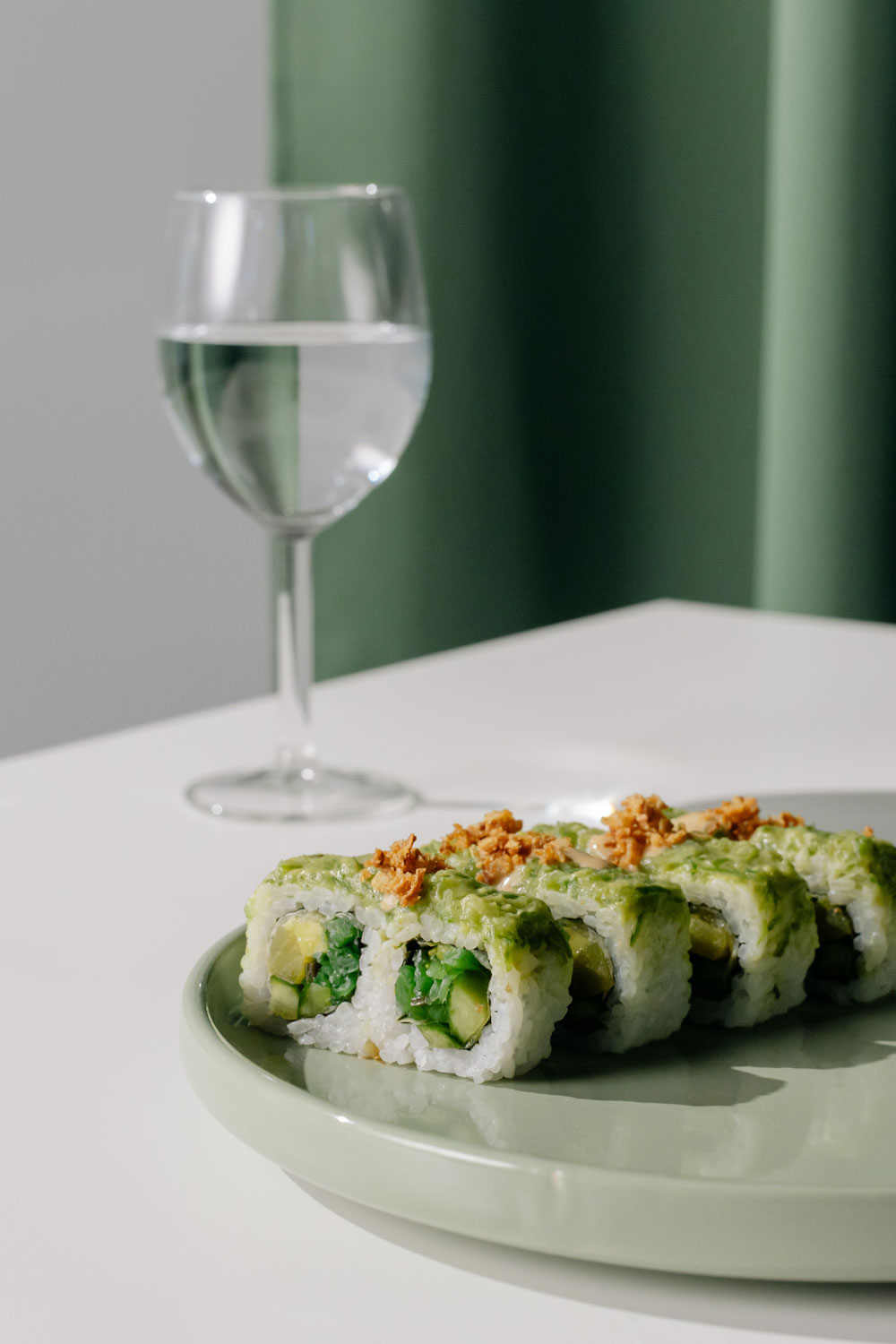Many sommeliers are certain that (purified) water has taste, and its differences in flavor depend on a variety of factors such as the source, the type of water, filtration method, and mineral levels.
This statement contradicts our common impression of water – a tasteless drink whose only function is to keep our body alive – while introducing to diners a new concept to explore on their culinary journey.
In fact, just like wine or any beverage, water can complement your dish if you know how to pair them right. Each different type of water can go well with some specific taste components like bitterness, sourness, sweetness, umami, spiciness, saltiness, as well as acidity and fat.

Water pairing principles: Congruent or Contrasting
A congruent pairing creates a balance between the dish and the drink by amplifying shared flavor compounds.
For instance, a rich cut of red meat would pair perfectly with high tannin red wine, or water with a bold texture like sparkling or high-mineral water.
If you want to go for a more exciting, out-of-ordinary experience, try to match a beverage and a dish that have contrasting tastes and flavors yet still complement each other nicely.
For instance, a sip of bubbly water would harmonize with the texture and strong flavors of a hot pot and balance the mouthfeel.
From these two principles, you can establish many ways of appreciating water.
Enjoy specialty water
The local geological factors like terrain and climate give each water its distinct terroir. Thus, studying the basic taste of each ‘specialty’ water would help you find its perfect companion more easily.
Natural mineral waters from the high mountains of Bhutan or the famous Acqua Panna in Tuscany (Italy) will go well with light desserts, soup (chicken or vegetable broth), or lightly seasoned vegetarian dishes since they all have subtle tastes.
Carbonated drinks from natural water sources in Vergèze, Gard (France), or Prekmurje (Slovenia) would pair nicely with desserts and sweets.
Mineral waters from Bergamo, Lombardy (Italy) would be enjoyable with Chinese cuisine as they both share strong flavors.
Mineral and carbonated water such as spring water sourced from the Northeast of Portugal should be a good match for rich meaty dishes like steak or spaghetti bolognese.

Develop a progression of waters through the meal
During a multiple-course meal, considering the rule of congruence and contrast to change water accordingly will enhance your culinary pleasure.
A good water progression may look like this:
Appetizers: Bold (some sparkling waters) or classic. These waters could strongly affect and awaken your palate at the beginning of the meal.
Salad: Effervescent or mineral water. They are not strong enough to ruin the freshness of veggies while adding some adequate sensation to your mouth.
Main course:
Light seasoned seafood would pair easily with still water as the absence of bubbles would draw attention to the dish.
For poultry, effervescent would be a nice match since it gives you a similar experience of having a taste of champagne, remaining the original texture of the dish.
For meaty dishes (red meat, for example), they would go well with classic or water with high mineral content.
Dessert: Still or carbonated mineral water. While still water cleanses your palate after a long flavorful meal and prepares you for the upcoming dessert, carbonated mineral water would elevate your sensory experience with sweets, especially chocolate.

However, experts also note that these are just basic references for you to get to know and heighten your culinary journey. Everyone should be encouraged to experiment and discover new food-and-water pairings that best suit their taste.
Acqua Panna is an international trademark of Sanpellegrino S.p.A from Milan, Italy.
Distributed in over 150 countries on five continents, this water represents quality in excellence by virtue of its proud origin. It completely embodies Italian style and integrally represents both indulgence and health. Acqua Panna’s source was established in 1564, in the time of the Romans. The natural spring was discovered by the Medici Family who bought the Panna estate.
The production facility is now the most technologically advanced in Europe and the water’s unique mineral composition and flavor profile is the direct result of its 14-year journey through the aquifer beneath the sun-drenched hills of Tuscany.
Translated by Bich Tram

